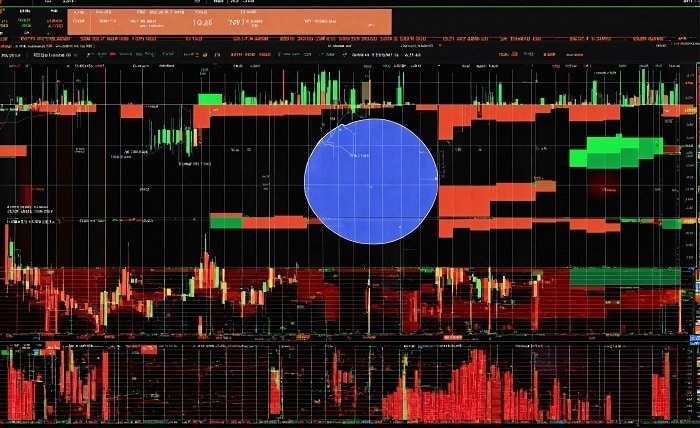FII DII Data NSE:Foreign and Domestic Investment Trends in India

The term “FII DII data NSE” refers to the data on investments made by Foreign Institutional Investors (FII) and Domestic Institutional Investors (DII) on the National Stock Exchange (NSE) in India. This data is crucial for market participants because it offers insight into investment patterns, helping investors gauge market sentiment. FII represents investments from foreign entities, while DII covers investments by domestic institutions such as banks and mutual funds. Both are vital players in shaping the NSE, influencing stock prices, liquidity, and overall market dynamics.
Tracking FII DII data NSE has become a regular practice for many investors, especially in today’s globalized economy where cross-border investments are common. The investments made by these institutions can signal market trends and affect decision-making processes for individual investors. By examining FII DII data, investors can better understand capital inflows and outflows in the Indian market, which directly affect stock market performance.
Importance of FII DII Data NSE for Investors
Understanding the importance of FII DII data NSE is essential for anyone involved in stock market trading or investing. The data provides a glimpse into the volume and direction of investments flowing in and out of the NSE. This data can help investors identify market trends, as heavy buying or selling by these institutional investors often influences market prices.
For example, a high volume of FII purchases might indicate confidence in the Indian market, potentially causing stock prices to rise. Conversely, heavy selling could indicate uncertainty, which might drive prices down. By monitoring FII DII data NSE, investors can anticipate market moves, adjust their portfolios accordingly, and potentially increase returns.
FII in NSE: A Closer Look
Foreign Institutional Investors (FII) are entities based outside India that invest in Indian financial markets. These include entities such as mutual funds, hedge funds, and pension funds. FII investments are significant because they bring foreign capital into the Indian market, often leading to increased liquidity and impacting stock prices.
FII investors are driven by factors such as interest rates, currency stability, and the Indian economy’s performance. A rise in FII data on the NSE often correlates with bullish market sentiments, as it signals confidence in India’s economic outlook. Conversely, if FII data shows outflows, it may indicate that foreign investors are wary of risks, which could cause market instability.
DII in NSE: Understanding Domestic Investment
Domestic Institutional Investors (DII) are institutions based in India, including insurance companies, banks, and mutual funds. DII data is equally crucial in understanding the stock market trends within the NSE. Unlike FII, DIIs are often less influenced by foreign economic conditions and more driven by domestic market factors, including GDP growth, inflation, and fiscal policies.
The presence of DII in the NSE provides a counterbalance to FII investments, as domestic investors tend to be more consistent and long-term focused. DII data can often act as a stabilizing factor when FIIs withdraw funds from the market, helping to maintain stock price stability.
How FII DII Data NSE Impacts the Stock Market
FII DII data NSE significantly impacts the stock market by affecting liquidity, market sentiment, and price movements. FII data is known to create short-term volatility because foreign investors often respond quickly to changes in global markets. Conversely, DII data tends to bring stability to the market due to the longer-term nature of domestic investments.
- Liquidity: FII inflows increase market liquidity, making it easier for investors to buy and sell stocks.
- Market Sentiment: Heavy buying by FIIs can create positive sentiment, while selling can create negative sentiment.
- Price Movements: Large transactions by FIIs and DIIs can lead to price fluctuations in specific stocks or sectors.
By tracking these trends, investors can gain insights into the broader market landscape and adjust their portfolios accordingly.
Analyzing FII DII Data NSE: Key Metrics to Watch
Analyzing FII DII data NSE effectively requires a focus on several key metrics. These metrics help investors understand the magnitude and impact of institutional investments in the market. Some of these metrics include net investments, gross purchases, and gross sales by FIIs and DIIs. Observing these metrics can reveal if there is a net inflow or outflow of funds, which has implications for market trends.
- Net Investments: This shows the difference between total buys and sells by FIIs and DIIs, giving a clear picture of net inflow or outflow.
- Sector-Wise Investment: Sector-specific data helps understand which industries are receiving the most attention from institutional investors.
- Historical Trends: Historical FII DII data can provide insight into long-term trends, helping investors predict future movements.
By closely analyzing these metrics, investors can make informed decisions based on institutional investment trends.
How to Access FII DII Data NSE
Accessing FII DII data NSE is fairly straightforward, as it is readily available on financial news websites, brokerage platforms, and the official NSE website. The data is generally updated daily, providing investors with fresh insights into market trends. For those seeking more in-depth analysis, many financial analytics platforms offer advanced FII DII data with historical charts and comparisons.
NSE updates FII DII data at the end of each trading day, allowing investors to make timely decisions. Additionally, several third-party financial websites provide FII DII data for free, along with additional analysis tools that help investors interpret the data.
The Role of FII DII Data NSE in Market Sentiment
FII DII data NSE plays a crucial role in shaping market sentiment. Large purchases by FIIs often lead to bullish sentiments as they signal confidence in the market. On the other hand, significant withdrawals by FIIs can lead to bearish sentiments, as it reflects caution among foreign investors. Domestic investors, represented by DII data, tend to invest consistently, thereby acting as a balancing force.
Market sentiment can heavily influence individual investor decisions, making it essential to understand the current FII DII data NSE. In periods of high FII activity, the market can exhibit exaggerated movements, often leading to rapid changes in stock prices. Staying updated on FII DII data helps investors assess market sentiment more accurately.
Practical Tips for Investors Using FII DII Data NSE
For investors looking to use FII DII data NSE effectively, here are some practical tips to keep in mind:
- Monitor Daily Data: Regularly checking FII DII data keeps investors informed of market trends.
- Look for Patterns: Watching for recurring inflows or outflows can indicate shifts in sentiment.
- Combine with Technical Analysis: Using FII DII data alongside technical indicators can provide a more comprehensive market outlook.
- Sector-Specific Data: Focusing on sector-specific FII DII data can highlight which industries are trending.
By applying these strategies, investors can better leverage FII DII data for their investment decisions, especially in a volatile market.
Conclusion
The FII DII data NSE provides invaluable insights into market trends, capital flows, and overall investment sentiment. By monitoring this data, investors can gain an edge in predicting market movements, making more informed investment decisions. Both FIIs and DIIs play essential roles in shaping the NSE, with FIIs often driving short-term volatility and DIIs providing stability. Utilizing this data alongside other analytical tools can help investors make strategic choices in the stock market.
In conclusion, FII DII data NSE is a crucial component of investment analysis in India. It not only informs investors of current trends but also helps predict future movements, especially in response to changing economic conditions globally and domestically. Whether you’re a seasoned investor or a beginner, staying informed about FII DII data can enhance your understanding of the stock market.
FAQs
- What is FII DII data NSE?
FII DII data NSE represents the investment data of Foreign Institutional Investors and Domestic Institutional Investors on the National Stock Exchange. - How does FII DII data NSE affect the stock market?
This data affects liquidity, market sentiment, and price movements, as significant FII or DII activity can influence stock prices and overall market trends. - Where can I access FII DII data NSE?
FII DII data is available on the NSE website, financial news portals, and analytics platforms, with daily updates provided. - Why do FIIs and DIIs have such a large impact on the market?
FIIs bring foreign capital, impacting liquidity and volatility, while DIIs bring stability with consistent investment, thus influencing market dynamics. - Can FII DII data NSE predict future market trends?
While not a definitive predictor, FII DII data can offer valuable insights into market sentiment and capital flows, helping investors anticipate possible trends.





